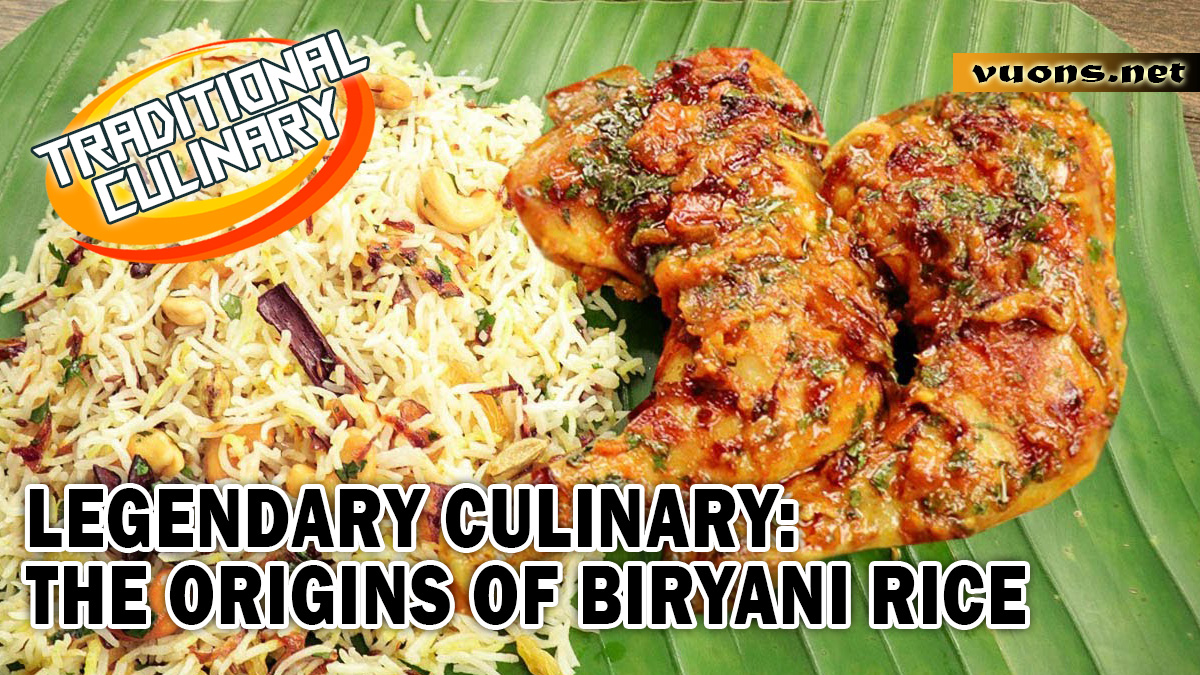LEGENDARY CULINARY: THE ORIGINS OF BIRYANI RICE
The Long History of Biryani Rice: From Persia to India
Biryani rice is one of the legendary dishes that is not only known in India, but also throughout the world. Its existence cannot be separated from a long history involving various cultures and culinary traditions. The origins of Biryani Rice can be traced to ancient Persia, where the rice-based dish with spices was first introduced.
In the 16th century, when the Mughal Empire ruled India, this dish was brought by Persian traders and conquerors. The Mughal court chefs, renowned for their expertise in cooking sumptuous dishes, adapted this recipe by adding various local spices, meats, and other ingredients available in India. This is where the Biryani Rice variant that we know today was born.
Biryani rice evolved into numerous variants across India, each with its unique characteristics. For example, Hyderabad is famous for its Hyderabadi Biryani which is rich in flavor and uses mutton, while Kolkata has Kolkata Biryani which is known for adding potatoes and eggs. In Kerala, Malabar Biryani is served with lighter flavors and uses fragrant basmati rice.
The specialty of Biryani Rice lies in the abundant use of spices such as turmeric, cardamom, cloves and cinnamon, which give it a distinctive aroma and taste. The cooking process is also unique, where the rice and meat are cooked separately before finally being put together in one pot and cooked using the dum method (steaming in a tightly closed pot) to lock in all the flavors.
To this day, Biryani remains a symbol of culinary diversity and rich cultural heritage. From Persia to India, and now throughout the world, this dish continues to captivate its connoisseurs with its deliciousness and history.
Evolution of Biryani Rice: Influence of Various Cultures
Originally originating from ancient Persia, this dish arrived in India in the 16th century through the rule of the Mughal Empire. Under Mughal patronage, Biryani underwent a significant transformation as it adapted to local spices and Indian eating habits.
The influence of various cultures can be seen in the various variants of Biryani across India. For example, Hyderabadi Biryani from Hyderabad is famous for its generous use of mutton and spices like cardamom and cinnamon. On the other hand, Kolkata Biryani adds potatoes and eggs to the meat and rice mixture, creating a unique taste that is unique to Kolkata.
Apart from India, Biryani has also spread to various countries in Southeast Asia and the Middle East, each with their own local adaptations. In Malaysia, Nasi Biryani is often served with pickles and boiled eggs, while in the Middle East, this dish can be found with variations such as lamb and raisins.
The process of cooking Biryani Rice also reflects broad cultural influences. The dum method (steaming in a tightly closed pan) used to cook it, gives this dish a unique delicacy and texture, while maintaining the integrity of the flavors of each spice and meat contained in it.
The evolution of Biryani not only shows brilliant culinary adaptation, but also emphasizes the importance of cultural exchange in enriching the world’s food heritage. With every bite, Biryani brings not only taste, but also a story about its long journey from Persia to India and beyond.
Types of Biryani Rice by Region
Biryani rice is a typical Indian spiced rice dish that has various interesting variants based on the region. Each variant has unique characteristics that reflect the rich culture and culinary habits of the local community.
- Hyderabadi Biryani: Famous from Hyderabad, this variant uses mutton cooked with spices like cardamom, cinnamon and cumin. The fragrant Basmati rice combined with the spice-soaked layers of meat makes it very popular throughout India.
- Lucknowi Biryani: Also known as Awadhi Biryani, originates from Lucknow, Uttar Pradesh. Unlike Hyderabadi Biryani, Lucknowi Biryani is lighter and uses spices such as saffron (zafran) and anise. The meat used can be goat or chicken.
- Kolkata Biryani: Uniquely, Kolkata Biryani uses potatoes and eggs along with meat (usually lamb or chicken). The spices used tend to be milder and less spicy, creating a taste unique to the city of Kolkata.
- Malabar Biryani: Typical of Kerala, Malabar Biryani uses mild spices and basmati rice mixed with meat or fish. It is usually served with pickles and chili sauce, adding to its unique taste.
Each Biryani Rice variant not only differentiates itself in taste and ingredients used, but also reflects the diversity of culture and culinary heritage of each region. From the abundance of spices to the distinctive cooking techniques, Biryani Rice is a perfect example of how food dishes can adapt and evolve according to India’s geographical and cultural differences.
Difference between Biryani Rice and Other Rice Dishes
Biryani is one of the most famous rice dishes in India, but how exactly is it different from other rice dishes? Here are some key points of difference between Biryani Rice and other rice dishes:
- Spices and Flavor: Biryani rice is renowned for its abundant and complex use of spices. Spices such as cardamom, cinnamon, cloves and cumin provide a distinctive aroma and taste that varies depending on the variant and region. On the other hand, other rice dishes may be simpler in seasoning or not use as many spices as Biryani.
- Cooking Method: The process of cooking Biryani Rice is also unique. Typically, rice and meat are cooked separately before being mixed and steamed together in a tightly covered pot (dum method). This allows all the flavors and aromas of the spices to penetrate perfectly into the rice and meat. On the other hand, some rice dishes may simply be cooked by boiling or steaming without using the dum technique.
- Ingredients and Texture: Biryani often contains meat (usually goat, chicken, or lamb), sometimes with potatoes or eggs, all of which are cooked with the rice. This creates a dish that is varied in texture, where the rice can be soft but not sticky, and the meat soaks up the spices perfectly. On the other hand, other rice dishes may not contain meat or other additional ingredients, focusing on the rice itself as the main component.
- Cultural Influence and Regional Variations: Biryani originates from India with various variants famous in each region such as Hyderabadi, Lucknowi, Kolkata, and others. These variations reflect the different cultural influences and rich culinary heritage across India. On the other hand, other rice dishes may be more limited in the variety and cultural influences they contain.
Overall, Biryani not only stands out for its taste and unique spices, but also for its unique cooking process and broad cultural influences. That’s what makes it one of the most special and sought after rice dishes throughout the world.




